When my son and I launched to go boating on the Duwamish River, the tide was out and the water at the end of the dock was only about 4′ deep. Nate stayed with the boat while I parked the car and trailer and while he was waiting he caught a glimpse of something resting on the bottom between the dock and the boat. He used the plug for ALISON’s motor well—it has a plexiglas window in the bottom—to get a clear view underwater and saw a Veo e-bike and a black and yellow Klein screwdriver. When I got back to the boat I was eager to hop aboard and get underway, but Nate rightly pointed out the e-bike had lithium batteries, which we couldn’t leave to contaminate the water. I handed him the anchor to use as a grappling hook and he was able to retrieve the bike and walk it to the far edge of the parking lot. I’d bought a fishing magnet kit a few weeks earlier and if I’d had it in the car or aboard the boat, we’d have motored away from the dock with a nice Klein screwdriver.
I was intrigued, for a while, by magnet fishing, but after seeing a lot of YouTube videos about it and watching a few magnet anglers at launch sites, I decided that there wasn’t anything made of steel or iron that had been sitting on the bottom for who knows how long that I needed, even if I got lucky enough to drag a magnet across it. But acquiring a Klein screwdriver that someone had dropped overboard right where we could see it, or better still, recovering one of my own tools that I had dropped overboard? That interested me.
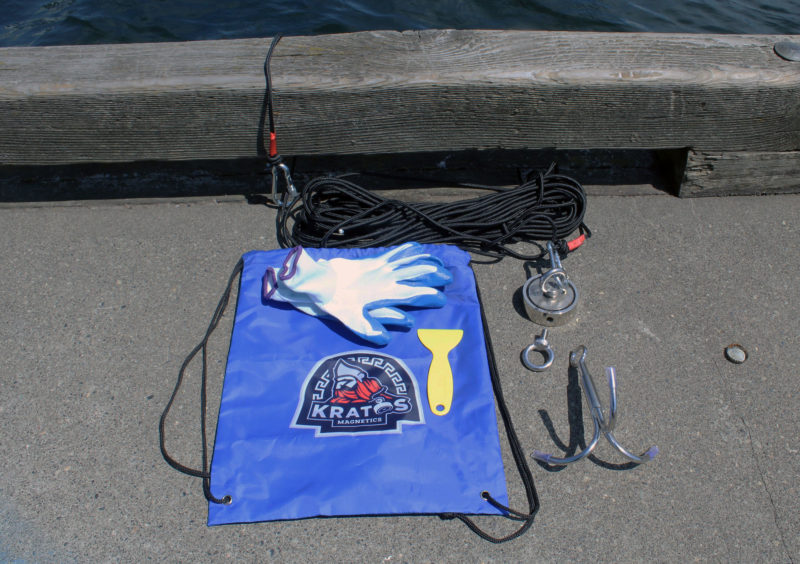 Photographs by the author
Photographs by the authorThe magnet I bought came with 65′ of 6mm line with carabiners attached, cut-resistant gloves, the magnet with two screw eyes, a bag with a shoulder-strap drawcord, a plastic scraper to remove particles from the magnet, and a stainless-steel grappling hook.
The magnet I purchased came with the Kratos 1100 Double Sided Neodymium Classic Magnet Fishing Kit. The double-sided neodymium magnet is rated at 1,100 lbs, but that’s the sum force of both sides—each face has a pulling force of 550 lbs. In the magnet-fishing world, that’s a beginner’s magnet. (Neodymium magnets come in different grades, most commonly between N35 and N55, with the higher grades being the stronger; mine had no grade indicated.)
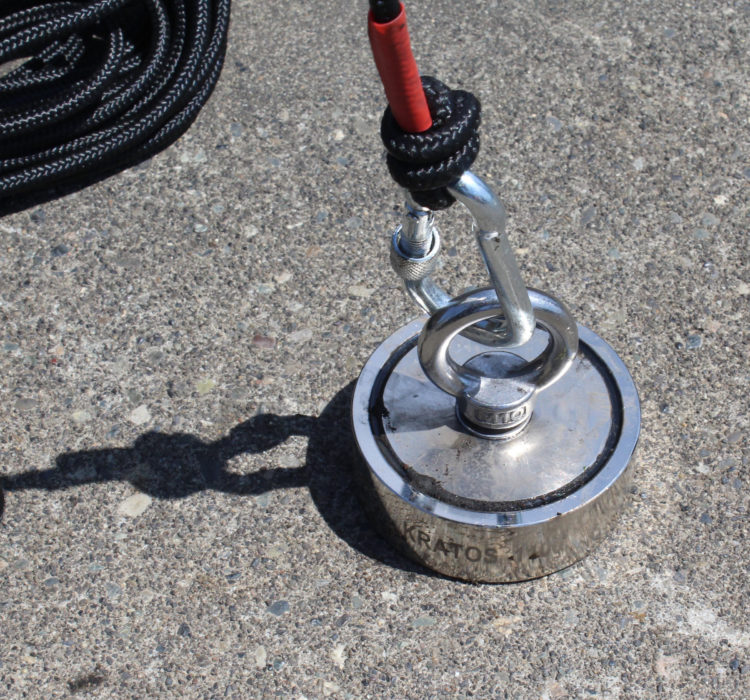
The magnet is double-sided and the screw eye can be attached to a threaded insert on either side. A small tube of thread-locking compound is included to prevent the screw eye from coming loose. The magnet has its best holding power in this orientation and is used when directly above the bottom being worked.
The full lifting force of the magnet isn’t likely to come into play when pulling some ferrous object off the bottom. The 550-lb force of my magnet would only be evident if pulled perpendicularly from a ferrous object with a flat surface and enough volume to engage the magnet’s magnetic field. I was once lucky enough to recover an old bottle cap, which I could easily pull straight off the magnet, and slide it off to the side more easily still. On larger objects, rough, irregular, and curved surfaces all reduce the magnet’s hold. A bicycle run off the end of a dock might weigh less than 50 lbs, but my magnet might not be powerful enough to hold it. Kratos sells single-sided magnets rated at over 2 tons that would have the kind of power required.
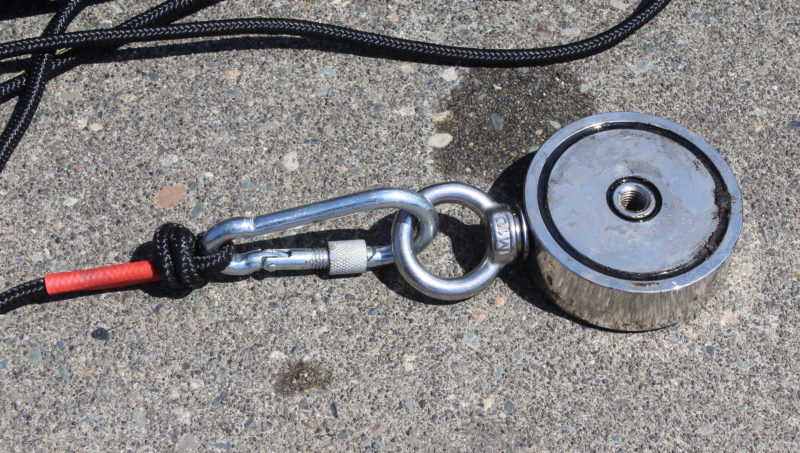
A screw eye can be installed in the side of the magnet for dragging across the bottom. Because the magnet is double-sided, it doesn’t matter which side is down, but its grip is diminished by the lateral pull. Dragging the magnet increases the chances of disturbing the bottom.
To test my magnet’s potential, I carefully placed it on the infeed table of my workshop’s 6″ jointer. It took hold of the smooth, flat, surface and its mass and wouldn’t let go when I pulled the lifting eye straight up—the jointer rose instead. The magnet wouldn’t budge when I tried pushing it sideways. To get it off, I had to use a 2×4 as a lever with the jointer fence as a fulcrum.
Ferrous metals aren’t the only thing I’ve recovered with my magnet. At the local boat-launch site, I clipped the tail end of its retrieval cord to the dock and threw the magnet out well beyond the submerged concrete ramp. Each of the two pulls I did harvested a volley-ball-sized comet of underwater plants. If they were native plants, I had damaged the ecosystem. If they were invasives, I might have accelerated their spread. And I might have stirred up toxic sediment that is best left undisturbed. While I didn’t identify what I’d uprooted on the freshwater ship canal, I know that eelgrass is an important part of Puget Sound’s near-shore environment, and that magnet fishing there might quickly do a lot of harm.
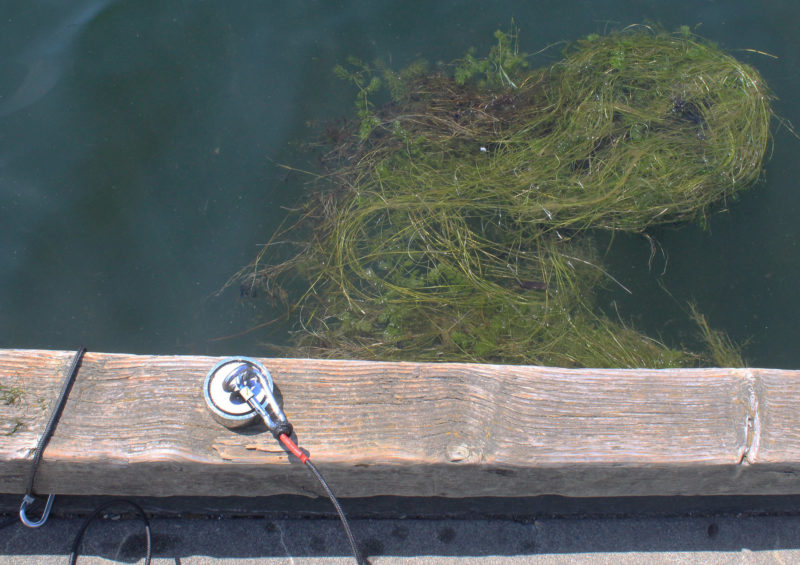
Two throws into the water beyond the launch ramp brought up all of this bottom growth in large clumps. (I had been dipping the magnet around the dock and didn’t move the screw eye to the side for dragging.)
The webpage for the magnet I bought notes that it is “perfect for use in a workshop of any kind.” I think it is too powerful for setting stops and featherboards on my tablesaw; magswitches are more easily applied and removed. Picking up spilled nails and screws or drill-press shavings works well when I put a 12″ square of canvas over the magnet to make removing those sharp things quicker and safer.
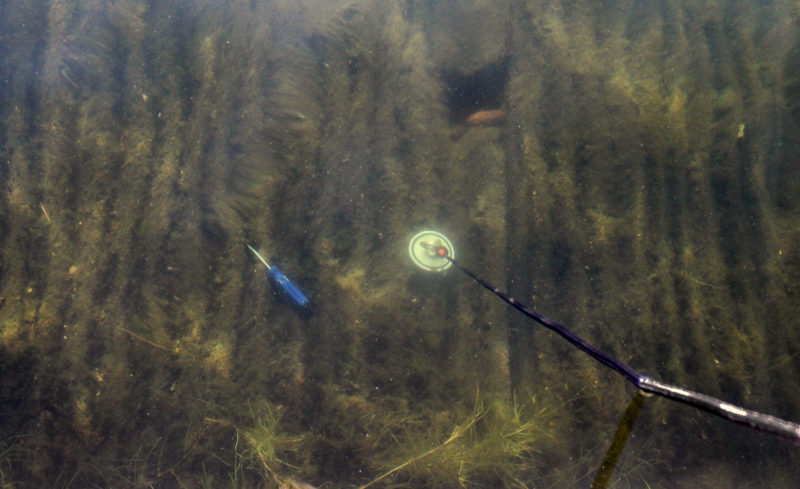
This isn’t the screw driver that Nate spotted, or the ramp we launched from, but a re-creation of the sighting. The blue screwdriver is mine, thrown off the dock and easily recovered with the magnet.
I’m happy to keep the magnet in my boating gear to use when I know there’s something valuable on the bottom that I can retrieve by dipping the magnet rather than dragging it. And if I ever have the idle time to go “fishing,” I’ll take a look first either with the motor-well plug as Nate did, or with my bathyscope or underwater video system. ![]()
Christopher Cunningham is the editor of Small Boats.
You can share your tips and tricks of the trade with other Small Boats readers by sending us an email.


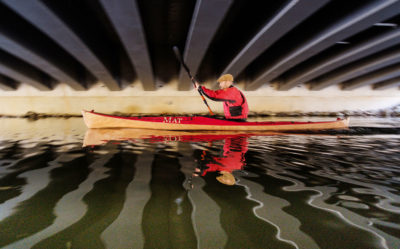

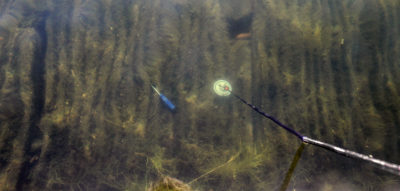
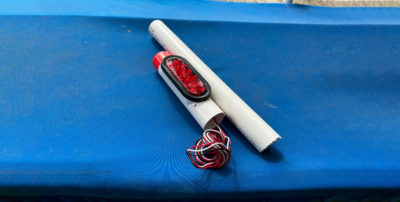
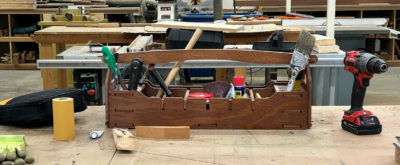

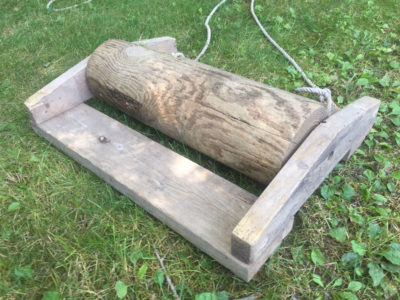
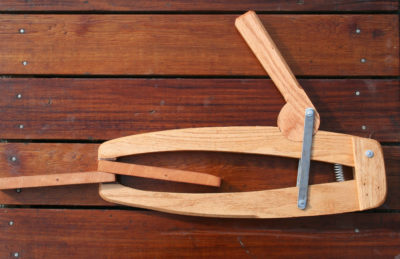

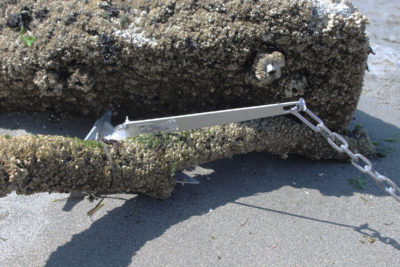
“To get it off, I had to use a 2×4 as a lever with the jointer fence as a fulcrum.”
We need to have a webcam in your shop…What’s Chris up to now? 🙂
I think this magnet would keep Skipper busy for a while, and maybe my RayBans that I lost in 2021 are still at the ramp?
I was able to retrieve keys dropped by a friend at Birch Bay Village (just south of the Canadian border) in one attempt. Fortunately, the friend new exactly where the keys had gone down. I don’t remember what the magnet was (nor whose it was), but fetching keys can save a lot of grief and inconvenience.